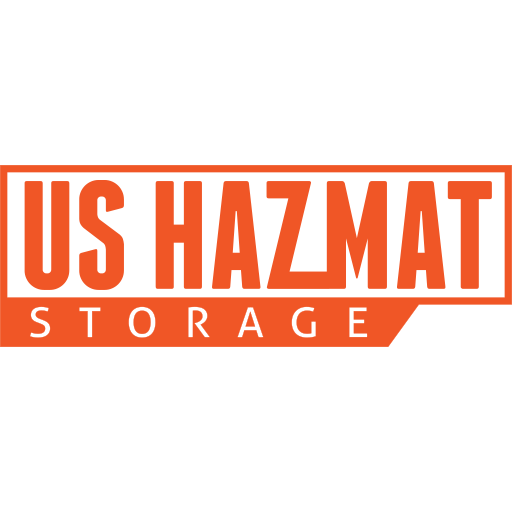Our Secondary Spill Containment Engineered for IBC Totes, Chemical Storage Drums, and Palletized Materials To Provide EPA Compliant Storage for your Hazardous Liquids and Materials.
Bunded Storage Buildings for Safe Chemical Containment
A bunded storage solution for liquid storage drums and Intermediate Bulk Containers (IBC Totes) is a specialized containment system designed and engineered to safely store hazardous or potentially polluting liquids and materials. It incorporates a secondary containment system, known as a bund, to catch leaks, spills, or overflows from the primary small-volume storage containers.
Our clients many times need to store a volume of hazardous containers. From small pails and buckets like paints and coatings, to large-volume bulk storage containers like 55-gallon chemical storage drums and liquid storage totes, as well as palletized hazardous materials in any primary containment system.
The bund, or secondary spill containment sump in our chemical storage buildings, provides adequate storage and overflow capacity to ensure leaks or spills are contained so as not to leak into your facility or into the environment. This allows your operation time to manage your material handling, removing the impaired container, and allowing proper cleanup of the spill without facing EPA compliance violations or worse–environmental impacts–which can result in costly remediation fees.
Key Features:
-
Secondary Containment:
The bund acts as a protective barrier that surrounds the drums or IBCs. It is designed to hold at least 110% of the largest container’s capacity or 25% of the total stored volume, whichever is greater (specific regulations vary by location).
-
Material:
Typically constructed from steel, polyethylene, or other durable, chemical-resistant materials. Choice of material depends on the type of liquid being stored (e.g., flammable, corrosive, or non-hazardous).
-
Design:
Can include integrated spill trays, grated platforms for easy handling, and lockable doors for security. Some designs are weatherproof for outdoor use.
-
Compliance:
Helps businesses comply with environmental regulations and safety standards related to the storage of hazardous materials, such as EPA guidelines, OSHA standards, or local environmental laws.
-
Applications:
Commonly used in industrial facilities, manufacturing plants, warehouses, and construction sites where hazardous liquids like oils, chemicals, paints, or solvents are handled.
Benefits:
-
Environmental Protection:
Prevents leaks or spills from contaminating the soil, water, or local environment.
-
Safety:
Reduces fire risks and ensures safer handling of hazardous materials.
-
Regulatory Compliance:
Simplifies adherence to safety and environmental legislation.
-
Cost-Efficiency:
Minimizes cleanup costs and potential fines for non-compliance.
Would you like more details on bunded storage solutions for a specific type of application or material?
What’s the difference between “bunded storage” and “secondary spill containment” systems?
Bunded Storage Systems
Bunded Storage Solutions Defined:
A bunded storage solution refers specifically to a storage unit (e.g., pallet, cabinet, or shelter) with built-in containment (the “bund”) designed to hold drums, IBCs, tanks, or palletized material. The bund is a permanent part of the structure and typically meets a required spill capacity standard to ensure EPA, OSHA, and local code compliance in hazard storage and flammable storage environments.
Key Characteristics:
- A self-contained unit with storage plus containment in one.
- Typically used for static storage of hazardous liquids.
- Examples: Bunded IBC spill pallets, bunded drum racks, bunded steel cabinets.
- Often compliant with EPA SPCC, OSHA, or NFPA standards.
Best Use:
Long-term storage where both protection from the environment and containment of spills are needed. Bunded storage is also beneficial to any mixing and dispensing workflow processes to ensure containment of any accidental spill, leak, or over-flow in process of either mixing or dispensing the material.
Secondary Spill Containment Systems
Secondary Spill Containment Systems Defined:
A secondary spill containment system is a broader category referring to any system used to catch leaks or spills from a primary container, including portable berms, spill trays, or even entire rooms with containment curbs.
Key Characteristics:
- Can be portable, modular, or passive (e.g., berms, dikes, spill trays).
- Used to supplement or retrofit areas where bunding isn’t built in.
- Can be temporary, reusable, or designed for transport compliance.
- Often used in mobile, field, or emergency containment.
Best Use:
Supplemental spill protection where bunded storage isn’t practical, such as during transport, loading/unloading, or temporary work zones.
Bunded Storage vs Secondary Spill Containment Summary
Feature |
Bunded Storage Solution |
Secondary Spill Containment System |
|---|---|---|
Definition |
Storage + built-in containment | Any system that provides secondary containment |
Form Factor |
Fixed, dedicated containers or cabinets | Flexible – includes berms, trays, curbing |
Use Case |
Stationary drum/IBC storage | Mobile use, emergency response, supplemental use |
Regulation Compliance |
Often engineered for long-term compliance | Can vary from temporary to compliant systems |
Examples |
Bunded pallets, IBC cabinets, bunded lockers | Portable spill berms, sump trays, containment mats |
It’s important to note that all bunded storage solutions are secondary spill containment systems, but not all secondary containment systems are bunded storage.
Choose bunded solutions for permanent, compliant storage; choose secondary systems when you need mobility, flexibility, or a temporary add-on to existing storage where other storage conditions, fire-rating, fire-suppression, or climate control are not a concern.
Consult US Hazmat today for guidance for your storage need and process workflow material handling compliance. Our experienced sales engineers will work with you to comply with all local, state, and federal storage compliance codes and regulatory guidance requirements.

